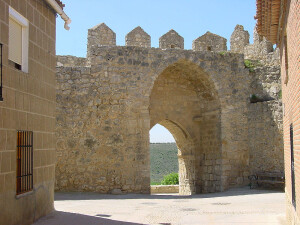On February 2 (2022) the Austrian Wine Marketing Board announced the approval of a new Districtus Austriae Controllatus (DAC) wine region: the Wagram DAC.
This newly defined quality wine designation has been approved by Elisabeth Köstinger, Austria’s Minister of Agriculture, Sustainability and Tourism and is scheduled to take effect with the release of the wines of the 2021 vintage. With the approval of the Wagram DAC, Austria has a total of 17 PDO-defined wine regions permitted to use the term DAC.
The Wagram region is located in the Austrian State of Niederösterreich (Lower Austria), immediately to the north and west of Vienna (and the Wiener Gemischter Satz DAC). The Danube River flows through the region, dividing it into the rolling hills around the town of Klosterneuburg (south and west of the river) and the flatter Wagram Plateau (to the river’s north and east).
The region currently has approximately 2,440 ha/6,030 acres of vines. Leading varieties include Grüner Veltliner, Riesling, Roter Veltliner (a pink-skinned grape), Zweigelt, and Pinot Noir. White wines produced under the Wagram DAC are not allowed to demonstrate “dominant” notes of wood (in aroma or flavor).
The Wagram DAC will produce three tiers of wine. These are as follows: Riedenwein (single-vineyard wine), Ortswein (wine from a specific village), and Gebietswein (regional wine). The specific regulations include the following:
- Riedenwein (single-vineyard wine):
- Only mono-varietal white wines are allowed
- Allowed grape varieties (3): Grüner Veltliner, Roter Veltliner, Riesling
- Ortswein (wine from a specific village):
- Only mono-varietal wines are allowed
- Allowed grape varieties (7): Grüner Veltliner, Roter Veltliner, Riesling, Chardonnay, Weissburgunder (Pinot Blanc), Blauburgunder, Zweigelt
- Gebietswein (regional wine):
- Mono-varietal wines and blends are allowed
- Field blends may be labeled with the term Gemischter Satz
- Allowed grape varieties (13): Grüner Veltliner, Roter Veltliner, Riesling, Chardonnay, Weissburgunder (Pinot Blanc), Blauburgunder, Grauburgunder (Pinot Gris), Frühroter Veltliner, Gelber Muskateller, Traminer, Sauvignon Blanc, St. Laurent, Zweigelt
As with all such updates, this change will need to wind its way through EU authorization; however, as the Austrian government has granted their approval, the changes will be in force (as scheduled) with the release of the wines of the 2021 vintage. If the EU fails to approve the amendment, the regulation will be rescinded (although this is quite unlikely to happen).
Welcome to the world, Wagram DAC!
The Austrian Wine Marketing Board has also announced some changes to the classification system for Austrian Sekt. Click here for more information on the newly approved Sekt Austria PDO.
References/for more information:
- Austrian Wine Marketing Board
- Austrian Wine Marketing Board—Wagram DAC
- Wagram DAC Classification Pyramid (pdf)
- Collective Agreement – Updates to Austrian Wine Law Feb 2022
Post authored by Jane A. Nickles…your blog administrator: jnickles@societyofwineeducators.org



















